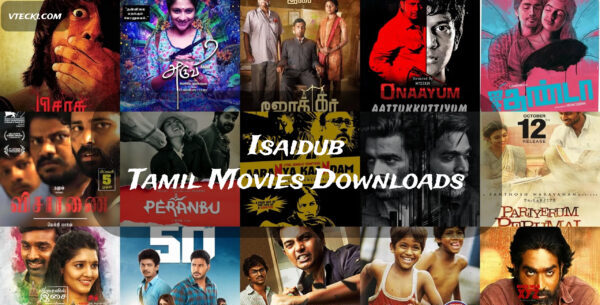I understand that you’re aware of Google’s intelligence. However, if you want to witness an interesting scenario, try searching for “monkey holding a box” on Google. Initially, the image search results might show a black youngster holding a box.
But hold on a moment. Google seems to have corrected this mistake. Now, you might find images of a man or even a woman in the search results.
When did Google start providing such peculiar results? It’s indeed an error caused by the Google crawler. However, this mistake can inadvertently become a source of amusement for those who find themselves associated with this particular keyword in the search results. Why does this happen? Let’s explore the story behind it in this article.
The Controversial Video of “A Monkey Holding A Box”
If you’ve stumbled upon a video featuring a “black monkey holding a box” or a box resembling a monkey, you may have heard various opinions regarding its nature.
Interestingly, this video serves as a source of both amusement and irony for many internet users. While some find it to be a sad joke, others dismiss it as a mere error on Google’s part.
However, the truth behind this video is quite different from what meets the eye. It was actually uploaded by a human and primarily focuses on another human. Confused? Let’s delve deeper into the explanation.
Errors Regarding “Monkey Holding A Box” Search Query
When I entered the search term ‘monkey holding a box’ on Google, a thumbnail of a YouTube video featuring Dwayne “The Rock” Johnson appeared on the search engine results page (SERP). However, previous responses to this query suggest that Google used to display a video in the search results for this keyword.
Instead of presenting images or videos of monkeys engaged in typical behavior, Google is showcasing irrelevant content, such as individuals holding boxes.
Many people worldwide rely on search engines like Google, Yahoo, Bing, and others because they trust the algorithms behind them to provide relevant search results. These search engines are often perceived as more accurate than individuals. However, the recent amusing or concerning search results (whichever way you perceive it) have undermined this trust.
It’s evident that Google’s algorithm struggles to discern between a monkey and a person holding a box (perhaps Google will take note of this).
An interesting observation is that other search engines, following Google’s lead, now display similar content. Initially, it was only Google that showed the video in its search results.
If you’re seeking images of “a monkey doing monkey things,” you won’t find them in the search engine results. Instead, the query on Google may lead you to click on a video or image unrelated to your search, such as a YouTube video featuring a box shaped like a monkey.
The Significance of Errors in the “Monkey Holding A Box” Search Query
The uproar surrounding the keyword “monkey holding a box” stems from the incorrect and irrelevant results displayed by Google. This discrepancy has led to widespread mockery of Google’s inability to comprehend a simple search term. The video’s irrelevance to the search query has fueled controversy and contributed to its viral spread.
When users input “monkey holding a box” into Google, they naturally expect to see images or videos featuring monkeys engaging in typical behavior, such as holding or playing with a box. However, the actual search results deviate significantly from these expectations, displaying images of a black boy holding a box or, in some cases, Dwayne Johnson.
While individuals are quick to pass judgment, it’s essential to recognize that Google’s algorithms operate without the use of common sense. Instead, they rely on predefined algorithms to assess searches and deliver results accordingly. Google’s sole criterion for relevance in this instance appears to be the depiction of a person holding a box, which does not align with the intended search for a monkey.
Improving Relevance in Search Engines
Search engines like Google strive to comprehend user needs and deliver relevant search results accordingly. To achieve this, search engines employ various methods to decipher the relevance between search queries and results.
Google utilizes diverse techniques for this purpose, including keyword analysis, tagging, and interpretation of social signals. These elements serve as crucial indicators that guide web crawlers in determining the relevance of search results to users’ queries. However, in the case of the search term “Monkey Carrying a box,” these optimization methods have evidently fallen short.
Understanding the Root Causes of the Error
The discrepancy observed when searching for “monkey holding a box” prompts an exploration into the underlying reasons for this anomaly. Several factors contribute to this error:
- Incorrect Image Association: One plausible explanation is that an erroneous picture was associated with the keyword or tag. The individual who uploaded the image may have found the analogy amusing, leading to its publication.
- Attempt to Manipulate Rankings: Another possibility is that the uploader sought to manipulate search engine rankings by using this keyword. By titling the video “Monkey holding a box,” they may have aimed to gauge the algorithm’s response and ascertain whether their content could attain a prominent position in search results.
- Misleading Video Title: The discrepancy may also stem from the video’s misleading title. If the uploader named the video “Monkey holding a box,” it could mislead search engines into displaying it for related queries, despite featuring a different subject, such as a boy holding a box shaped like a monkey.
These reasons suggest a combination of intent, algorithmic interpretation, and user behavior contributing to the observed error. As search queries evolve and gain popularity, users increasingly scrutinize search results to verify their relevance and accuracy.
Implications of Mislabeling: Unveiling the Racism
The unfortunate aspect of this scenario lies in its origins. The video in question stemmed from a YouTuber’s quest for an image associated with the keyword “monkey holding a box.” However, the search yielded a picture of a black boy carrying a box, incorrectly labeled with the derogatory keyword “monkey holding a box.”
This incident exposed underlying racism, as the mislabeling perpetuated harmful stereotypes. The YouTuber sought to highlight this issue by creating a video addressing the racism inherent in such misrepresentations. Categorizing the image of the boy with the offensive keyword “monkey holding a box” constituted a wrongful act.
In Conclusion
The video (Monkey Holding a Box) featuring the mislabeled image has risen to prominence, ranking prominently on Google’s search results. Subsequently, other search engines like Bing and Yahoo have followed suit, showcasing the same video prominently.
While the desire to attain a top position on search engines may have motivated this action, it is crucial to acknowledge the inappropriateness of labeling a human being as a monkey. This incident underscores the importance of confronting and addressing racism in all its forms.
Hopefully, this explanation sheds light on the circumstances surrounding the incident. Should you have any further inquiries, feel free to share them in the comments section.





